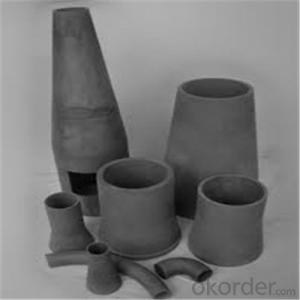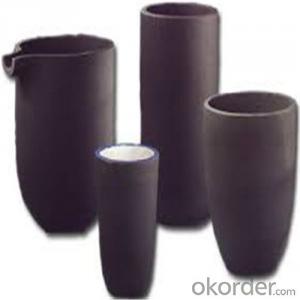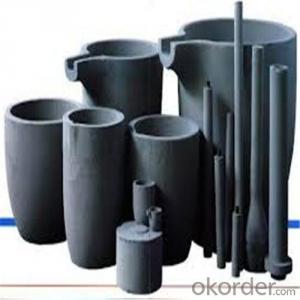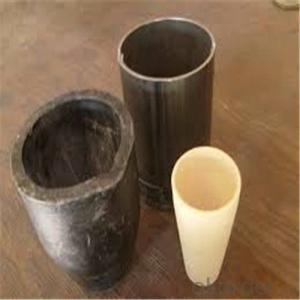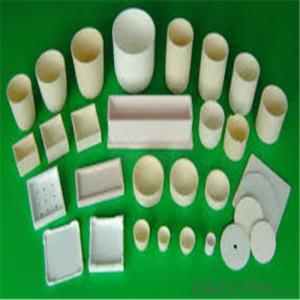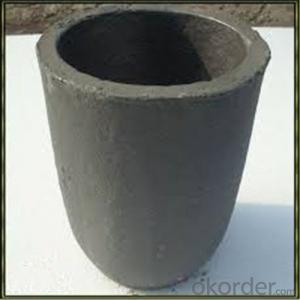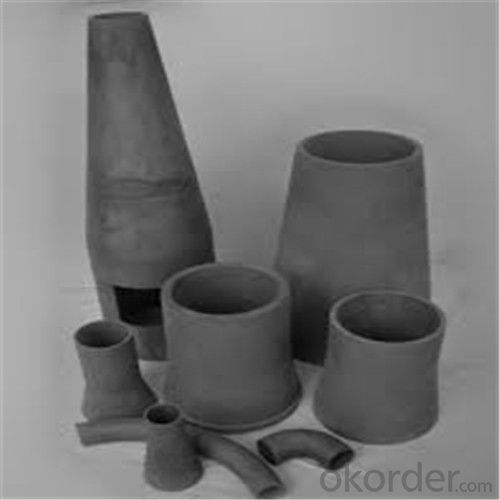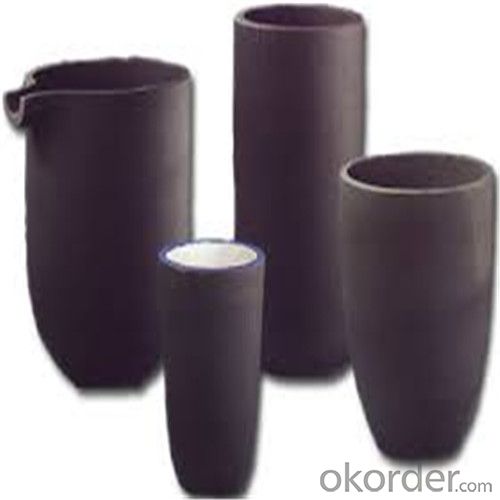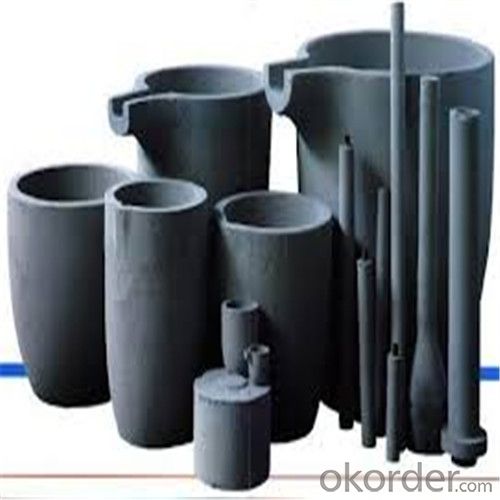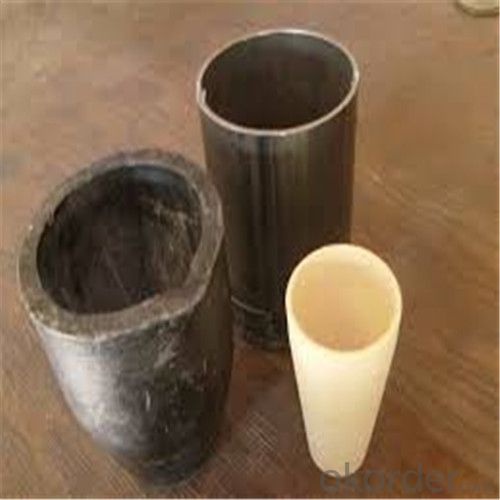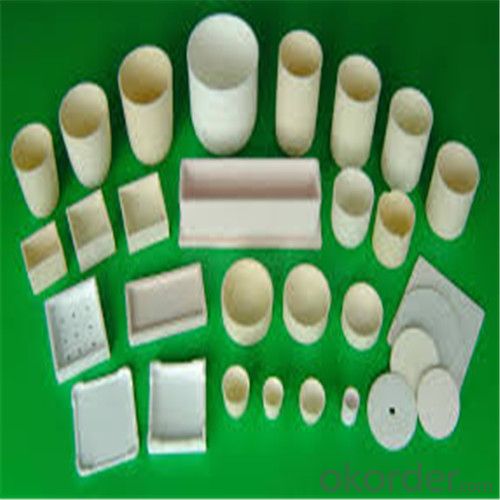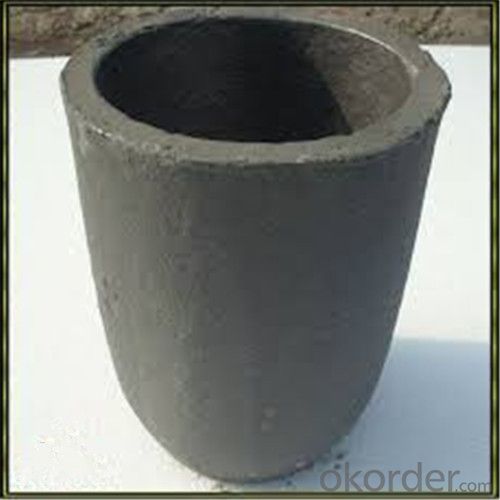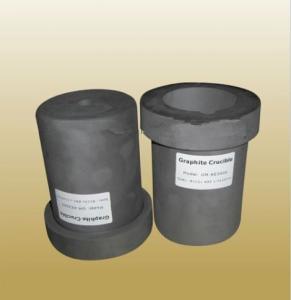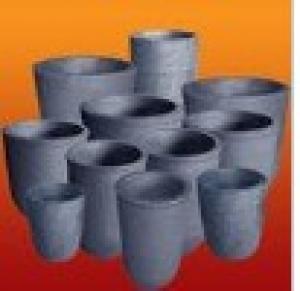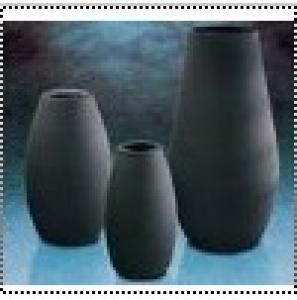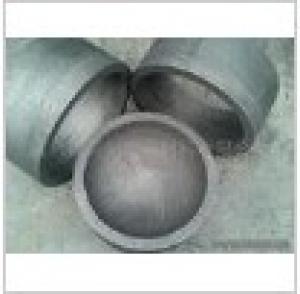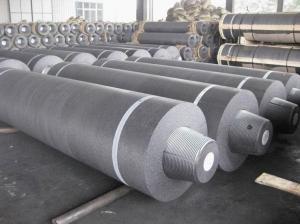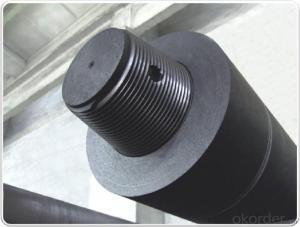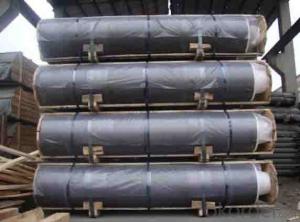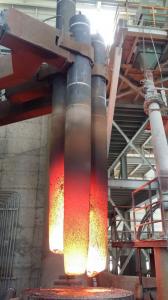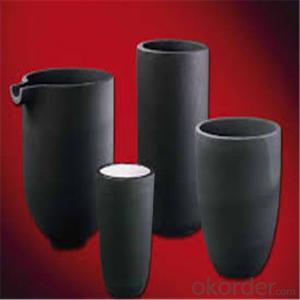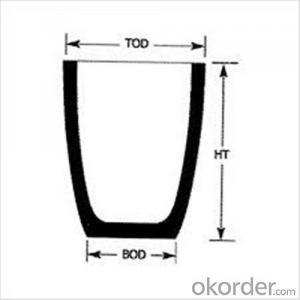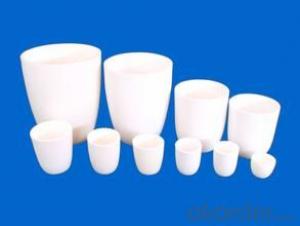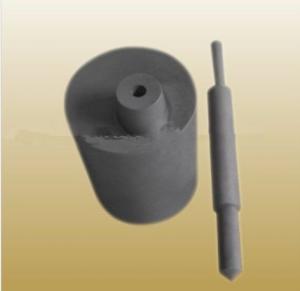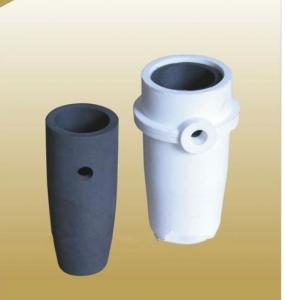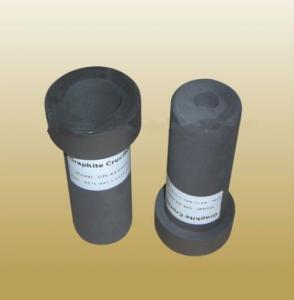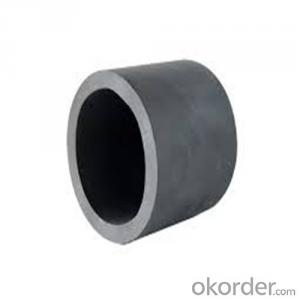High Heat Resistance Graphite Crucibles for Melting Aluminium and Copper
- Loading Port:
- Shanghai
- Payment Terms:
- TT OR LC
- Min Order Qty:
- 1 pc
- Supply Capability:
- 1000 pc/month
OKorder Service Pledge
OKorder Financial Service
You Might Also Like
Quick Details for SiC Crucibles For Melting Aluminium,Copper, Brass with High Heat Resistance
| Type: | High Strength, graphite crucible crucible | Application: | melting metal | Height: | as your requirements |
| Composition: | High Pure | Top Diameter: | 10-600mm | Bottom Diameter: | 10-1000mm |
| Place of Origin: | China (Mainland) | Brand Name: | Model Number: | ||
| Color: | Black grey | Si3N4%: | 5min | Fe2O3%: | 0.7max |
| C%: | 30-45 | Apparent porosity: | 30max | Refractoriness: | 1680 |
| Bulk Density: | 1.71min | Using life: | >5000 hours | MAX temperature: | 1600c |
Packaging & Delivery
| Packaging Details: | Seaworty packing or as per customer's detail requirement of graphite crucible. |
| Delivery Detail: | within 20-30 days after confirm order of graphite cru |
SiC Crucibles For Melting Aluminium,Copper, Brass with High Heat Resistance
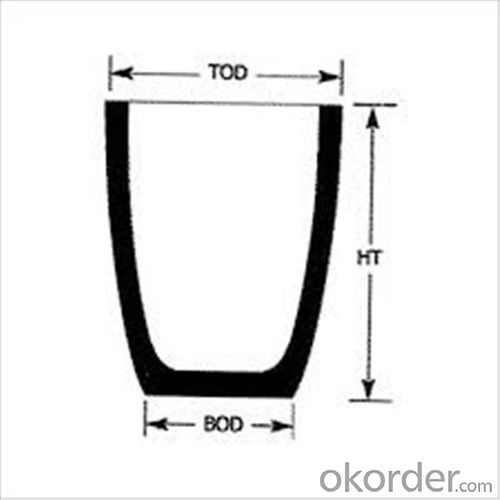
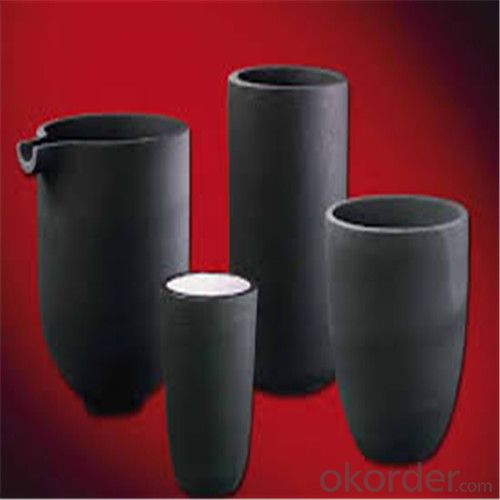
Features of SiC 95% silicon carbide sic crucible
1. resistance to deformation at high temperature,
2. thermal shock resistance, wear resistance, corrosion resistance.
3. anti-oxidation, anti- erosion.
Usage of SiC 95% silicon carbide sic crucible
electricity and steel slag trench,
coal chemical and mining transport pipeline.
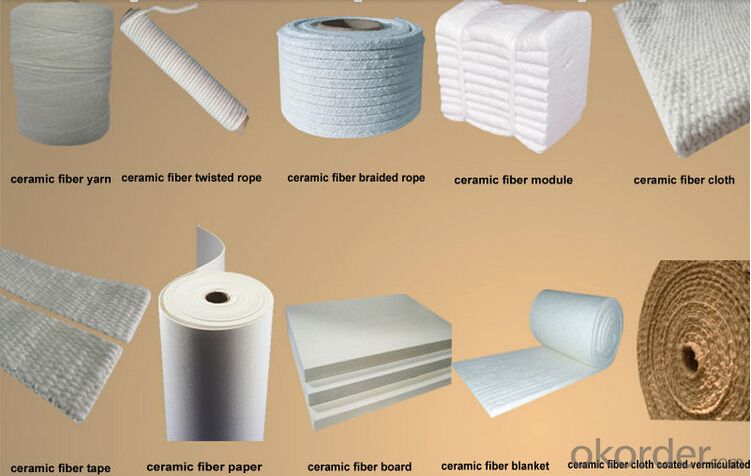
- Q: Disadvantages of graphite crucibles
- The graphite crucible is much better than the traditional crucible, to say the disadvantage is that the technical requirements are very high, and the life of the imported crucible and the domestic crucible is about 3:1.
- Q: How long can a graphite crucible last for a long time?
- The special thermal shock resistance, thermal expansion of graphite is anisotropic, and the macro expansion coefficient is small, the temperature change under the condition that the volume change of graphite is not large, coupled with its good thermal conductivity, good thermal shock resistance and graphite.
- Q: How do you determine the melting capacity of a graphite crucible?
- To determine the melting capacity of a graphite crucible, there are several factors to consider. Firstly, the size and shape of the crucible play a significant role. The volume of molten material that a crucible can hold is directly related to its dimensions. Typically, crucibles are available in various sizes, so selecting the appropriate size for the desired melting capacity is crucial. Secondly, the material being melted and its corresponding melting point are important considerations. Different materials require different amounts of heat energy to reach their melting point. The melting capacity of a crucible should be determined based on the specific material being melted and its associated temperature. Thirdly, the quality and composition of the graphite used in the crucible is essential. High-quality graphite with good thermal conductivity and resistance to thermal shock can withstand higher temperatures and facilitate efficient heat transfer, resulting in a higher melting capacity. Lastly, the heating method and equipment used also influence the melting capacity. The heating rate, maximum temperature achievable, and the overall efficiency of the heating system can impact the crucible's ability to melt materials. To determine the melting capacity of a graphite crucible, one can refer to the manufacturer's specifications or consult with experts in the field. Additionally, conducting trial runs with small quantities of the material being melted can provide practical insights into the crucible's melting capacity. It is important to consider safety precautions and follow recommended guidelines when determining the melting capacity to avoid any damage to the crucible or potential hazards.
- Q: Are there any specific cleaning agents or methods recommended for graphite crucibles?
- Yes, there are specific cleaning agents and methods recommended for graphite crucibles. Graphite crucibles should be cleaned using a mixture of water and potassium nitrate or hydrochloric acid. The crucible should be soaked in this solution for a specific duration and then rinsed thoroughly with water. Additionally, a soft brush can be used to remove any stubborn residue. It is important to follow the manufacturer's guidelines and safety precautions while cleaning graphite crucibles.
- Q: Is it possible to customize the shape or design of a graphite crucible?
- Certainly, the shape or design of a graphite crucible can be personalized. Graphite, being a highly adaptable material, can be molded and formed into various shapes. Industries like metallurgy, foundries, and laboratories often utilize graphite crucibles for the purpose of melting and casting metals. Manufacturers employ specialized techniques such as CNC machining or graphite molding to customize the shape or design of graphite crucibles. CNC machining involves the use of computer-controlled machines to precisely shape the graphite material according to the desired form. This method facilitates the creation of intricate and accurate designs. On the other hand, graphite molding is a process where graphite powder is compressed into a specific shape using a mold. This technique is commonly employed for simpler and more standardized crucible shapes. Customization of graphite crucibles may involve modifications in dimensions, addition of handles or spouts, or the creation of unique designs to cater to specific applications. This customization process ensures that the crucible is tailored to meet the user's specific requirements, thereby ensuring optimal performance and efficiency. It is important to note that customizing the shape or design of a graphite crucible may result in additional costs and lead times. This is because the customization process requires specialized equipment and expertise. Hence, it is crucial to engage in communication with the manufacturer or supplier to discuss customization options, feasibility, and associated costs.
- Q: You solved it. What happens if a quartz crucible is coated with a graphite crucible?
- The graphite crucible will burn on an alcohol burner, and the quartz crucible may cause cracks due to uneven heat.
- Q: What can replace a graphite crucible?
- Save and process.1. Graphite crucible is afraid of water, and must avoid moisture and water flushing.2. Note that the surface is raised instead of placing the crucible directly on the floor and placed on the tray.3. Not rolling horizontally on the floor, when pushing pads, requires something softer, such as cardboard or cloth, so as not to bruise, scrape, and stand on the floor at the bottom.4. You can't land or crash while handling. Please pay special attention to it.
- Q: What are the different methods of preventing contamination from graphite particles?
- There are several methods that can be used to prevent contamination from graphite particles. 1. Use of containment systems: One method is to use a containment system, such as an enclosed environment or a glove box, to prevent graphite particles from escaping into the surrounding area. These containment systems can be equipped with air filtration and ventilation systems to remove any graphite particles that may be present in the air. 2. Proper handling and storage: Another method of preventing contamination is to ensure that graphite particles are properly handled and stored. This may involve using sealed containers or bags to store graphite, and using appropriate handling techniques to minimize the release of particles into the environment. 3. Regular cleaning and maintenance: Regular cleaning and maintenance of equipment and surfaces that come into contact with graphite can help prevent contamination. This may involve using specialized cleaning methods, such as wet cleaning or vacuuming, to remove any graphite particles that may be present. 4. Personal protective equipment: Using personal protective equipment, such as gloves, masks, and coveralls, can help prevent contamination from graphite particles. These protective measures can help minimize direct contact with graphite, reducing the risk of contamination. 5. Proper training and education: Providing training and education to personnel who handle graphite can help raise awareness about the risks of contamination and the proper precautions to take. This can include training on proper handling techniques, the use of personal protective equipment, and the importance of regular cleaning and maintenance. By employing these methods, contamination from graphite particles can be effectively prevented, ensuring a safe and clean working environment.
- Q: What are the uses of graphite? What are the downstream products of graphite?
- As refractory material: graphite and its products have the properties of high temperature resistance and high strength. They are mainly used in the metallurgical industry to make graphite crucibles. In the process of steelmaking, graphite is often used as a protective agent for steel ingots and lining of metallurgical furnaces
- Q: How do you prevent contamination from the graphite crucible during melting?
- To minimize contamination from the graphite crucible during the melting process, several steps can be taken: 1. Thoroughly clean the graphite crucible before each use. This involves removing any leftover materials from previous melts, such as slag or impurities, using an appropriate cleaning agent or solvent. It is crucial to ensure that the crucible is completely dry before proceeding to the next step. 2. Apply a protective coating to the graphite crucible to prevent contamination. This can be achieved by using boron nitride or other suitable coatings, which create a barrier between the molten material and the crucible. Not only does this coating prevent the crucible from reacting with the melt, but it also facilitates easy removal of the solidified material. 3. Prior to adding the material to be melted, it is recommended to preheat the graphite crucible. This helps eliminate any remaining moisture or contaminants that may be present, thereby reducing the risk of contamination during the melting process. 4. Handle the graphite crucible with care while melting to avoid introducing contaminants. The use of appropriate tools like tongs or gloves can prevent direct contact with the crucible, therefore preventing contamination from oils, greases, or other substances present on the hands. 5. In certain cases, it may be beneficial to conduct the melting process in a controlled atmosphere to prevent contamination. This can be achieved by employing an inert gas, such as argon or nitrogen, to create a protective atmosphere around the crucible. This safeguards against oxidation or reaction with the crucible material. By adhering to these preventive measures, the risk of contamination from the graphite crucible during the melting process can be minimized, ensuring the purity and integrity of the resulting melt.
Send your message to us
High Heat Resistance Graphite Crucibles for Melting Aluminium and Copper
- Loading Port:
- Shanghai
- Payment Terms:
- TT OR LC
- Min Order Qty:
- 1 pc
- Supply Capability:
- 1000 pc/month
OKorder Service Pledge
OKorder Financial Service
Similar products
Hot products
Hot Searches
Related keywords
